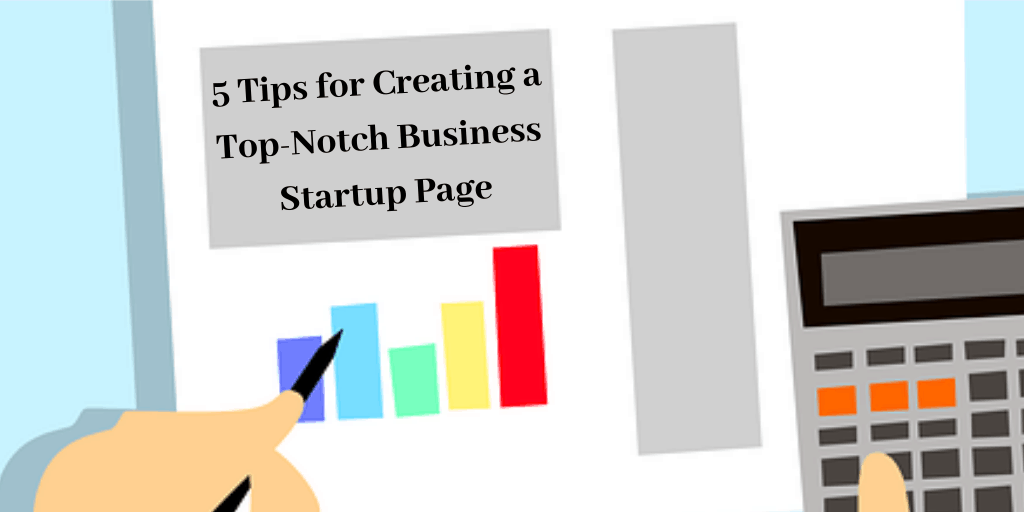Given that there are 100 million startups created around the world every year, it’s hard to imagine that your startup could stand out. However, if you build a strong startup page to promote your company, you could show why you’re different than the rest. By showing why you deserve time and attention, or even investment, from your audience, you can win over not just customers, but loyal converts.
Here are five things to keep in mind when you’re creating your page.
1. Keep The Design Simple
When you’re trying to create a great page for your startup, look at what’s happening with modern design. Most modern web design is simple, stripped down, and lean. Where once we drooled over the clutter and options offered by a front page, now it’s more about aura.
Your company’s page needs to show that you know about design. You need to communicate who you are through words, colors, and fonts.
Look at what other companies in your industry are doing and take some notes. Look at how much white space they’re leaving on their page, how you would describe their fonts, and what kind of images they use.
Never copy one of your competitors exactly, but do take into account what seems to be working for them.
If you’re new to the world of web design, consider using a template. Templates are a great way to ensure that your design functions well and stays within the current standards of web design. You won’t have to worry about fitting your design for mobile devices when you use a modern template.
Just be sure to customize your template. Remember that lots of other sites could be using that template and might look exactly like yours if you don’t make it your own.
2. Inform and Educate
The purpose of your site is to tell people new to your company who you are and what you’re about. If people are visiting you to buy your products, they’ll go directly where they need to go. IF someone is just browsing your site for the first time, it’s up to you to give them the information they need to work with you.
Try using a chat window that’s connected to an answering service. You could introduce yourself to potential customers and answer many of their most common questions.
If you think it’s relevant, you should even consider starting a blog. A blog can help to answer visitors’ most common questions in the form a 500-1000 word article. Instead of making a direct pitch to sell to them, you can tell them exactly why they need your products and what it can do for them.
Selling in an old-fashioned way is no longer possible. You need to show your products’ value up front, before you try to sell clients on what you have.
3. Get User Information
Your page should also offer something of value to your customers. If you’re offering management services, you should offer them an ebook with your top ten tips of management advice. If you sell baseball cards, you should offer a guide to the top 100 most valuable cards printed in the last 20 years.
In order for customers to get access to this, you should ask to get some of their personal information. If you have valuable things to offer, giving them a taste of what your site can provide will allow you to earn their trust. Once they trust you, it’s much easier to sell.
Once you get contact information from your potential clients, you need to provide lots of value with every point of contact. You should have a customer management interface that will tell you which types of content they interact with most. Over time, you can cater content to your users more specifically.
4. Build Excitement To Attract Investment
Your front page needs to build excitement about your products and services. Your best bet to building excitement is to let people know why they should invest in your products and service. Do this by talking about what makes your products and services special.
The way that many new companies and brands are building excitement is through brand videos.
Hire a local videographer to help you shoot a brand video to showcase your best products and services. Customers don’t want to invest in simply a company that sells them products now. They want to get involved in the life of a brand.
Tell the whole story by creating content that can inform as well as entertain them.
5. Use Descriptions That People Understand
When you’re describing who you are online, you need to speak in a language that people can understand. Don’t go into long-winded philosophical descriptions about what you do. Get right to the point.
People don’t want to have their time wasted when they’re online. When they’re browsing for products, they’re using their leisure time. You need to respect the value of this time and give them quality content in exchange.
Start by drawing them in with a familiar description of what you do or what kinds of problems you solve. If you’re “the Uber of dog walking”, then say that flat out. Don’t try to sell them on some esoteric concept of what you do right away.
Once you’ve got them hooked, you can tell your story and try to win their loyalty. But on the front page of your startup, you need to be crystal clear.
Your Startup Page Needs To Sell You Softly
When customers and clients visit your startup page, they can’t feel like they’re being sold to right away. You need to use images and short pieces of text to make them feel like they’re missing something. Sell them on who you are as much as you sell them on what you do.
If you’re not sure where you are in the startup lifecycle, check out this guide for more info.




